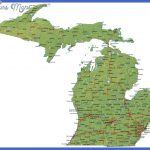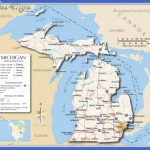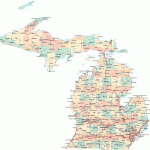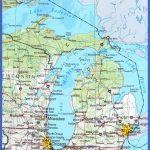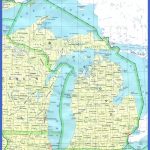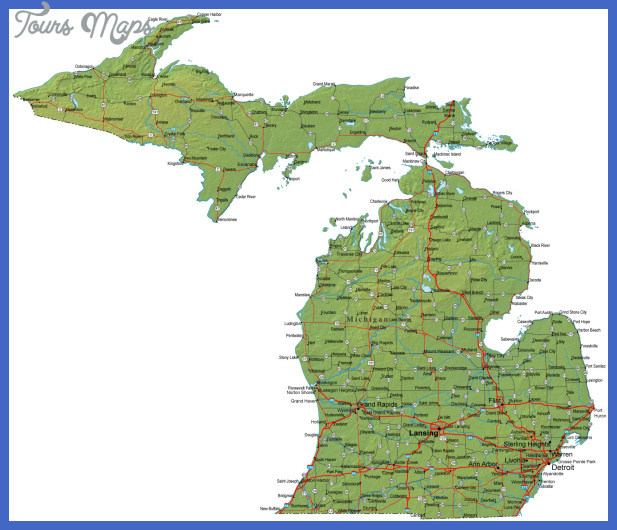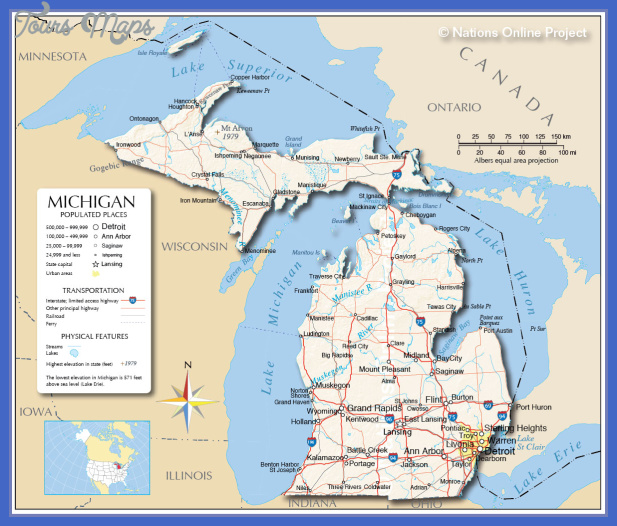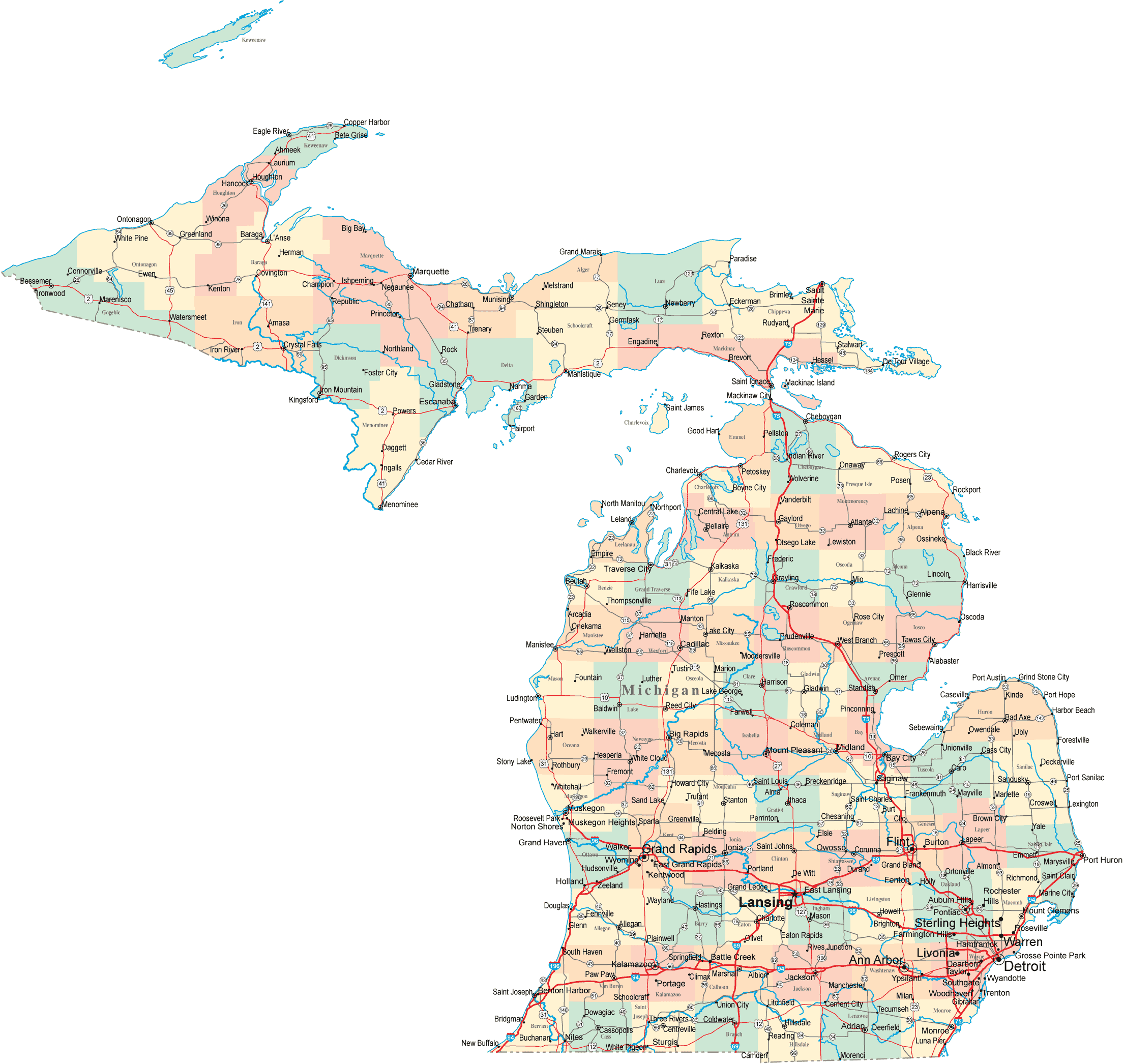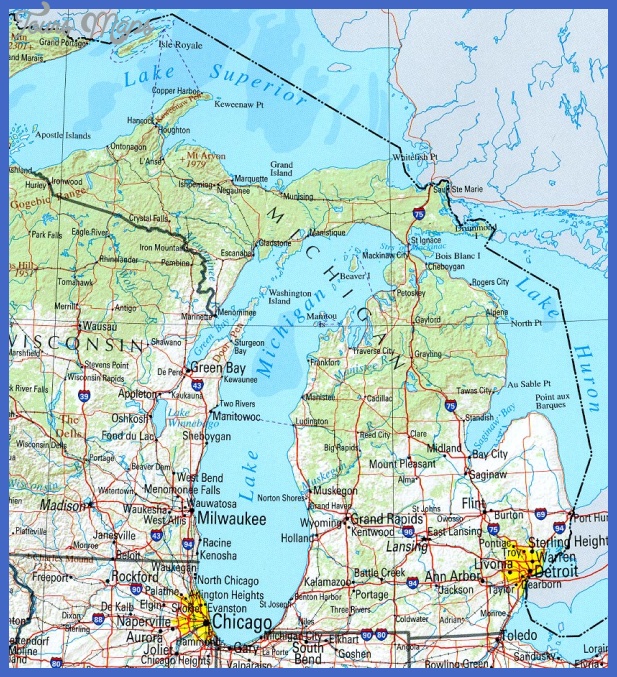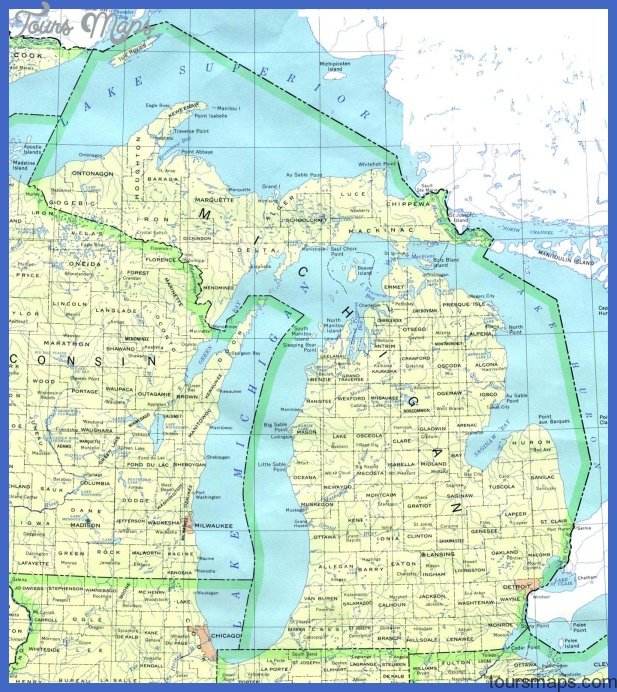Michigan The Growth of Latino Diversity
Until 1950 nearly all Latinos in Michigan were either Mexican migrants or Mexican Americans. After mid-century other Latino groups began to arrive in the state. In 1950, federal policies designed to provide labor to Michigan employers
and assist in modernization projects in Puerto Rico created the first major settlement of Puerto Ricans in the state. After five decades of U.S rule Puerto Rico suffered levels of unemployment and poverty worse than those in most of Latin America. Puerto Rican and federal officials hoped that by funneling the unemployed to the mainland, they could lighten the burden to create an industrial economy in Puerto Rico, raise living standards for Puerto Rican citizens, and demonstrate that U.S.-style capitalism could solve the problems of the Third World. Michigan congressman Fred Crawford was a leading proponent of migration as a solution to what he called the pressure of population in Puerto Rico. He was also a former beet sugar producer who knew about the seasonal market for farm labor in the Midwest. Along with the Migration Division of the Puerto Rican government, Crawford began, after the war, to promote Puerto Rican workers to midwestern farmers. When Texas officials warned that fewer Mexican Americans would be available for contracts in 1950, the Michigan Sugar Company arranged to airlift 5,300 Puerto Rican men to Saginaw for the beet harvest.
In their dealings with the Puerto Ricans, Michigan sugar contractors used the same systems of exploitation that they had practiced on Mexican American families for decades. They paid by the acre, passing much of the risk of losses on to workers; thus, if the weather was bad or if the fields were full of weeds, workers made less money per day. In 1950 both the weather and the fields were unusually bad, cutting workers income by more than half. Employers also held all wages until the end of the season to prevent workers from moving to better opportunities elsewhere in the state. Mexican American migrants survived this system by working as family units in the fields men, women, and children. With everyone working, families could subsist on the credit offered by employers; and at the end of the season, after everything was discounted, these families received a modest amount from their employers. The Puerto Rican workers brought to Michigan were all men traveling without their families. Without women’s unpaid labor, they needed to set aside food allowances to pay someone to clean the camps and cook. They needed wages sufficient for one worker in Michigan to support a whole family in Puerto Rico. And they needed regular paychecks in order to send money home to feed their wives and children before the end of the season.
Because employers were not willing to offer any of this, the airlift quickly turned into a humanitarian disaster. One airlifted worker, Santos Cintron, reported, I have seven kids and my wife. They are buying in the grocery store on credit. I spoke with the man at the grocery store and asked him to give food to my wife and kids. Haven’t sent one penny you see, in three months, because I haven’t got it, the company hasn’t paid. Now my wife writes that the grocery store stopped the credit.10 Desperate, Cintron made his way to Detroit, where he found work in a steel plant. Foundry work was hot and dirty, but it paid him enough to send money home to his family every week. Other Puerto Ricans left the beet
farms too, joining Mexican Americans in the growing barrio in the southwestern part of the city. There they became the pioneers of a growing Puerto Rican community in Detroit. Labor contractors continued to bring small numbers of Puerto Ricans to the state for the sugar harvest each summer. This helped build the permanent Puerto Rican population, but probably not as much as family ties did. Once established in Detroit, workers sent word to family and friends about jobs in their plants. In 1980 the federal census counted 12,425 Puerto Ricans in Michigan; in 2000 that number was 26,941.
Federal policies brought the first major settlement of Cubans to Michigan too, although under dramatically different circumstances. In the two years after the Cuban Revolution of 1959, several hundred thousand exiles arrived in south Florida. These exiles included supporters of the toppled Batista regime, business owners, professionals, and others threatened by the economic radicalism and shifting political repression in Cuba. U.S. officials waived visa requirements for refugees from Cuba, whom they saw as victims of a common communist enemy. The government also offered cash assistance, training, and other types of support to Cubans.
Despite most Cubans’ middle-class background and privileged status as refugees, many residents of south Florida chafed at the rapid growth of a new Latino population in their midst. In response the federal government worked with private church groups in an attempt to distribute the Cuban refugees around the country. These combined public and private resettlement programs had brought more than 1,700 Cuban refugees to Michigan by 1968.11 By 1980, some 4,000 Cubans and Cuban Americans were living in the state. In the 1980s and 1990s, as new waves of refugees left Cuba, the Cuban ethnic population of Michigan grew to more than 7,000.
The arrival of Puerto Rican and Cuban migrants in Michigan raised a new set of questions: To what extent was there a Latino community in the state? And to what extent were there separate national communities Mexican, Puerto Rican, and Cuban simply imagined as homogeneous by outsiders? Because of their class status and because of the efforts made to distribute and integrate them into communities around the state, Cubans did not generally settle in urban neighborhoods occupied by other Latinos; nor, for that matter, did smaller numbers of Argentine and Brazilian professionals who came to the state to work at Ford and General Motors.
Mexicans and Puerto Ricans shared the neighborhood of Southwest Detroit, but they did not necessarily share social institutions. Father Kern, of the Holy Trinity Church in Detroit, expressed frustration that Puerto Ricans did not attend mass in his church. The Episcopal Church of the Ascension in Detroit, on the other hand, saw a dramatic transformation in its membership in the late 1970s, becoming largely a Puerto Rican congregation. Puerto Ricans understandably showed little enthusiasm for celebrations of Mexican patriotic holidays, the primary spaces for celebrating Latino ethnicity since the 1920s. Rather than force their way
into the existing festivals, newcomers set up separate Puerto Rican festivals in the early 1970s. Still, relations among these groups were not predominantly contentious. Not infrequently community activists from one national origin took up the cause of neighbors from unrelated backgrounds under the umbrella of a Latino community.
Map of Michigan Photo Gallery
Maybe You Like Them Too
- Explore Southgate, Michigan with this detailed map
- Explore Les Accates, France with this Detailed Map
- Explore Góra Kalwaria, Poland with this detailed map
- Explore Gumdag, Turkmenistan with this detailed map
- Explore Telfes im Stubai, Austria with this detailed map

